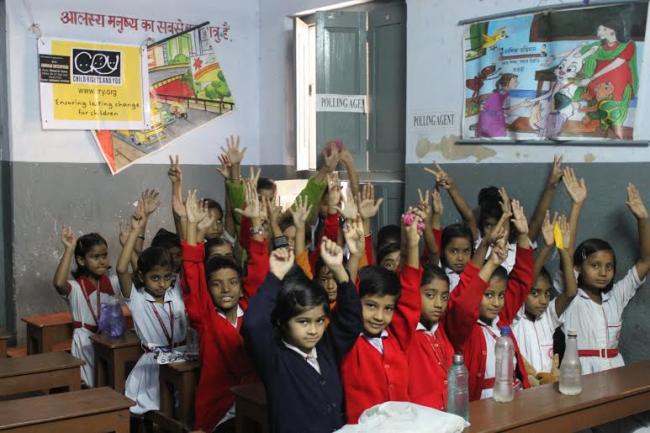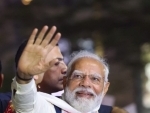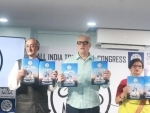
Send them to school and make sure they stay : CRY
Inclusion of girl children in education, especially in the secondary and higher secondary level is still an area of grave concern in West Bengal, if one is to go by the latest data. As the recently published U-DISE 14-15 database reveals, there is a steep nosedive in Net Enrolment Ratio (NER) for the girls in the state, as it falls to a mere 50.6% at the secondary level, which means only half of the girls in the state are enrolled age-appropriately at the secondary level education. Going forward, the figure subsequently plunges deeper to a worrying 32.7% at the HS level, to imply that less than a third of the girls in the state are enrolled at standard XI & XII, as the trend analysis by CRY – Child Rights and You has pointed out.
Even though last few years have seen significant improvement in enrollment at primary and upper-primary classes, the same is not the case with that of the next two levels. The net enrollment ratio, which is a measure of girls who attend school age-appropriately, is 91.3% and 82.6% in West Bengal at the primary and upper-primary levels respectively. But shoes start pinching only when it comes to the secondary and higher secondary strata, as the following table clearly suggests.
However, West Bengal is just a shade better in comparison to the National scenario, where the net enrollment ratio for the girl children at the primary level stands at 89%, and drops at a meager 32% in the higher secondary level.
According to experts, one big reason behind this downward trend in net enrollment is the age-cap mentioned in the RTE Act 2009, which ensures education for children till the age of 14 years. Elaborating the point, Komal Ganotra, Director Policy Research & Advocacy CRY – Child Rights and You said, “The Act covers children between the ages of 6-14 years, and enables free and compulsory education at the primary and upper primary levels. However, in absence of any legislation for children above the age of 14 years the scenario at the secondary and higher secondary level unfortunately remain dismal. At the National level the average annual dropout rate for girls rises from 4.14% at primary level to 17.8% at secondary level (Source: U-DISE 2013-14). In West Bengal the situation is almost the same, as the average annual dropout rate for girls rises from 2.37% at primary level to 19.8% at secondary level.”
Another worrying issue is the lack of schools at the secondary and higher secondary level which also act as a deterrent in access to education post the elementary level. This continues to be a huge challenge, considering only 15.4% of schools across all the states offer secondary education and further still only about 7% of the schools offer higher secondary education. Zeroing down to the state-level scenario, 82.9% of the schools in West Bengal offer primary education, and 19.4% offer upper primary education; whereas only 10.5% of the schools offer secondary education, and 7% offer higher secondary education. According to critics this poses issues of access particularly for girl children, which is reflected in enrollment.
However the silver lining of the story lies in the changing mindset of the people, as Ms. Ganotra pointed out. She said, “Mindset to educate girl child is changing in India. Even in the most remote villages, many parents want to send their daughters to school. We need to drastically increase resources to meet these demands of making secondary and higher level education, affordable and easily accessible to girl child. Progressive state-schemes like ‘Kanyashree’, which has been recently enforced in West Bengal, and the huge ownership that the state government has taken in terms of having more govt.-run schools across the state, are indeed among the much-needed steps for the better. We must see that these schemes are implemented to the best interest of our daughters and help make it a better place for them to grow.”
“As per the recent U-DISE report, in West Bengal the percentage of Secondary Schools run by state-govt. is 92.94%, which is way ahead than the National average standing at a meager 55%. At the Higher Secondary level too, number of state-owned schools in the state is 93.94%, whereas the National average is 59%,” she added.
Support Our Journalism
We cannot do without you.. your contribution supports unbiased journalism
IBNS is not driven by any ism- not wokeism, not racism, not skewed secularism, not hyper right-wing or left liberal ideals, nor by any hardline religious beliefs or hyper nationalism. We want to serve you good old objective news, as they are. We do not judge or preach. We let people decide for themselves. We only try to present factual and well-sourced news.







